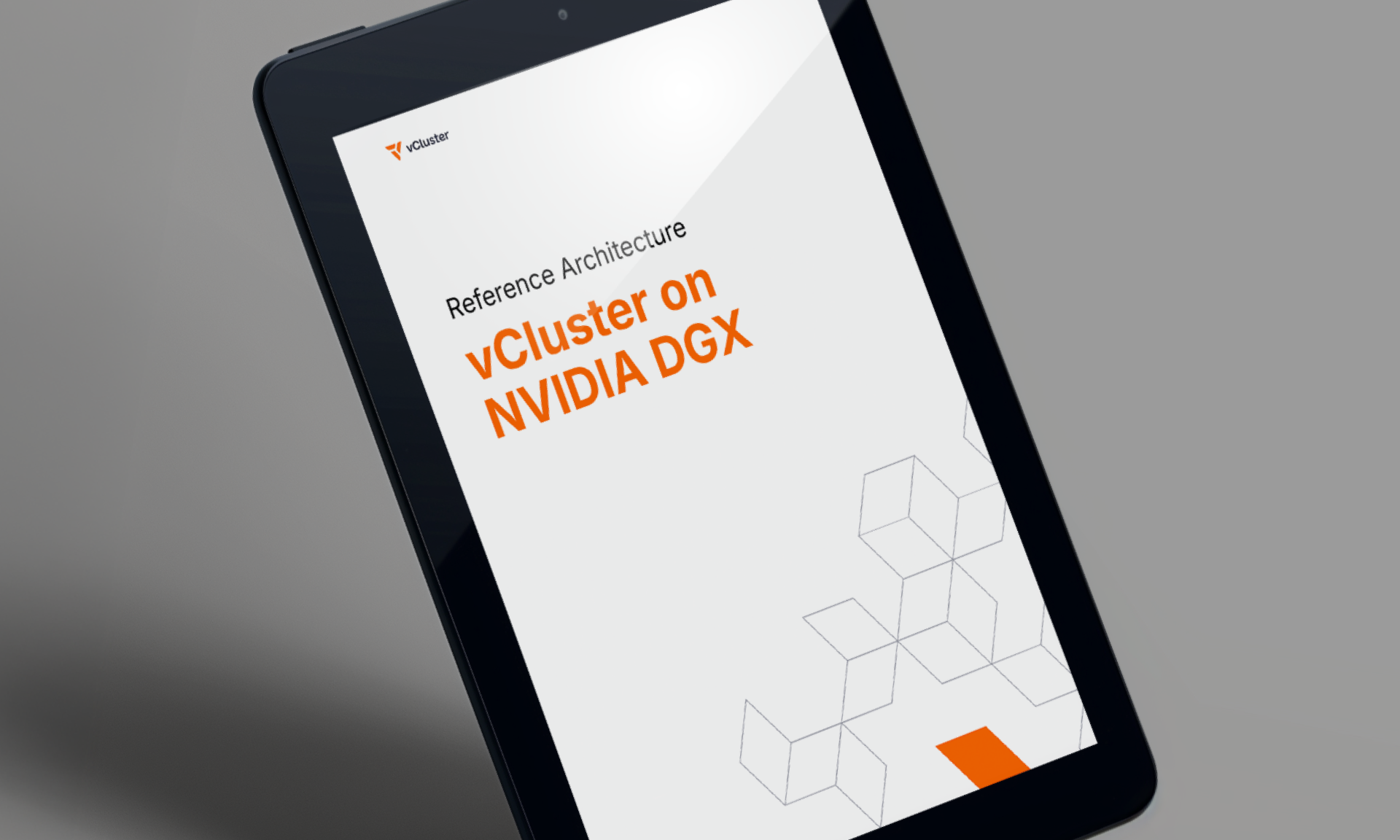Table of Contents
From the beginning, every Kubernetes operation started with a host cluster, whether it was K3s, EKS, Rancher, or Talos. With vCluster, teams gained the ability to layer virtual clusters on top of these hosts, bringing new levels of flexibility, isolation, and speed. This model has powered countless production deployments and continues to be the standard way organizations run Kubernetes multi-tenancy today.
As adoption grew, though, a new opportunity emerged. Managing both the host distribution and the virtual cluster layer sometimes introduced extra steps, different vendors, separate upgrade paths, and distinct operational processes. For many teams, that flexibility is a feature. But for others, the ability to consolidate host and virtual cluster into a single, unified foundation is even more compelling.
With the release of vCluster Standalone (v0.29), we’ve taken the next step in the tenancy spectrum: a vendor-supported way to bootstrap Kubernetes directly on bare metal or VMs without needing an existing host cluster. Instead of managing clusters across different providers, vCluster itself becomes the foundation.
The Evolution with Standalone
Over the past few years, vCluster has steadily evolved to simplify multi-tenancy and reduce operational pain:
- Namespaces → The lightest form of tenancy. Easy to start with, but limited isolation meant noisy-neighbor problems and weaker security boundaries.
- Shared Nodes → By running vClusters inside a host cluster but sharing host nodes, teams gained more flexibility, but resource sharing still created constraints.
- Private Nodes (v0.27) → A breakthrough in true isolation: tenants gained dedicated compute with their own worker nodes, enabling stronger security and advanced use cases like GPUs.
- Auto Nodes (v0.28) → Elastic scaling via Karpenter integration gave tenants dynamic compute without manual intervention, making vCluster more efficient and cost-friendly.
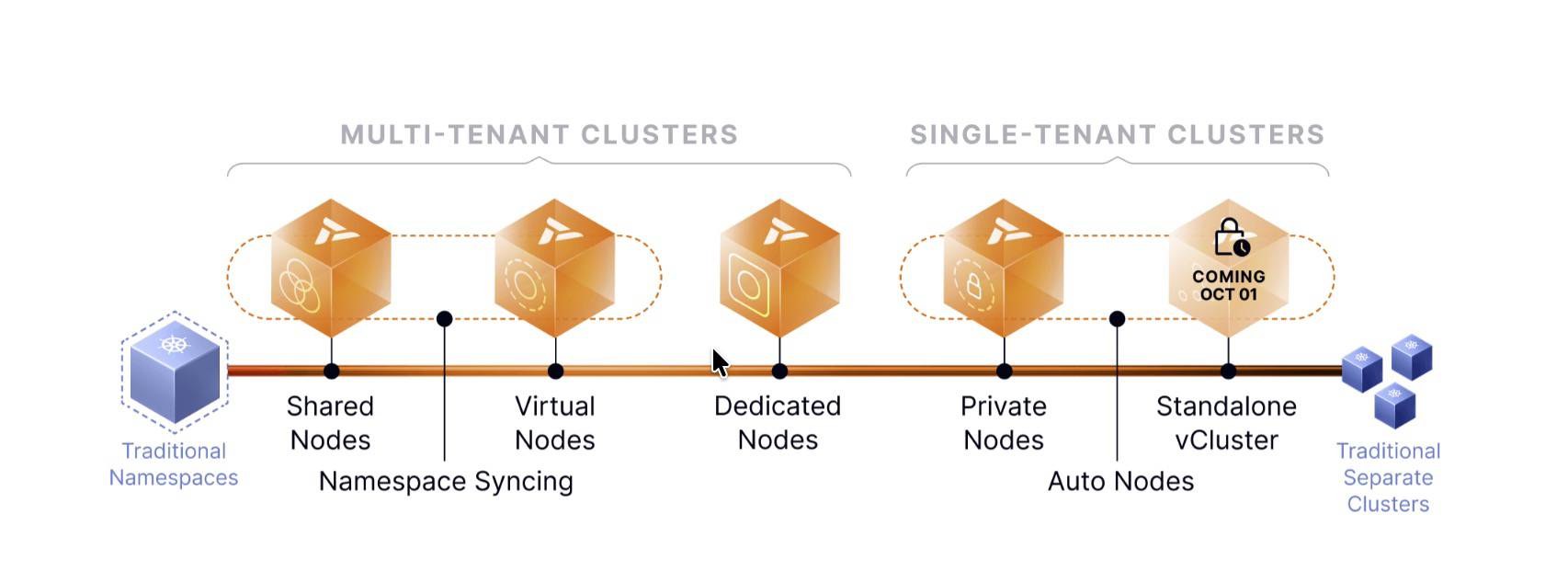
Now, with the release of vCluster Standalone (v0.29), the range extends even further. For the first time, vCluster removes the dependency on an external host cluster as you can install the standalone on your host, which becomes the foundation, bootstrapped directly on bare metal or VMs. No more “Cluster 1 problem,” where you have to figure out the underlying host when using virtual clusters
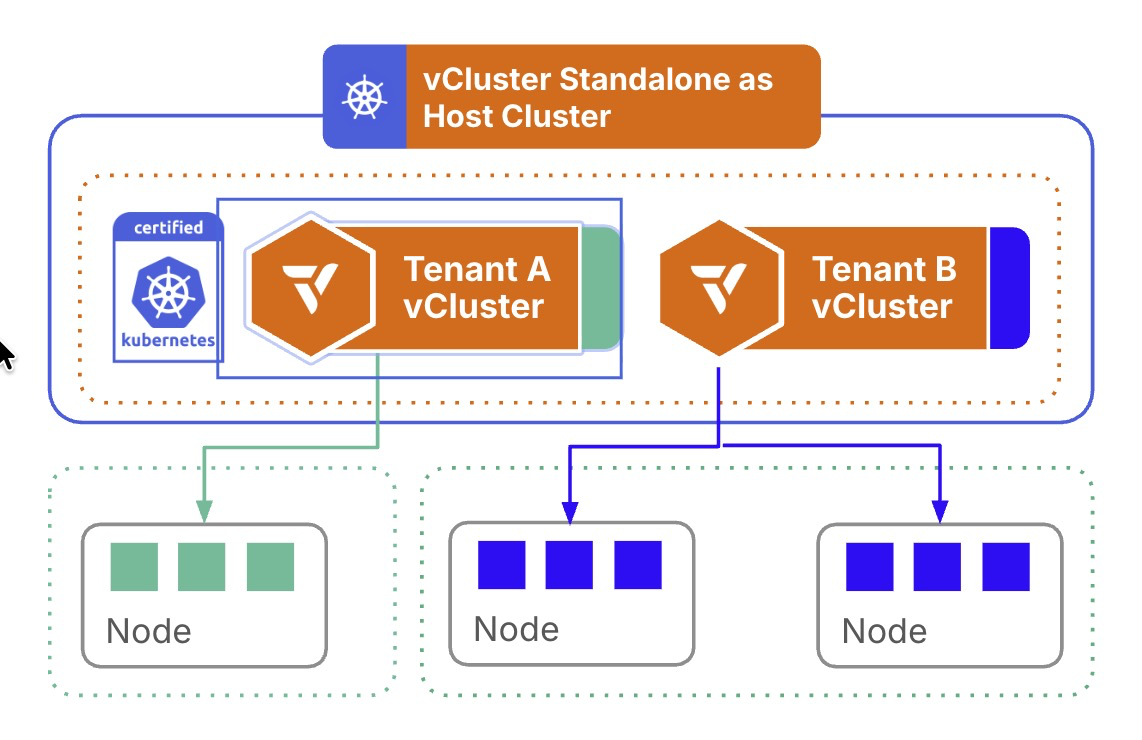
Most importantly, Standalone lets you use the full range of tenancy models for your virtual clusters without ever needing to worry about managing an external host cluster.
How vCluster Standalone Works
vCluster Standalone is free to use and runs with Private Nodes built-in, delivering strict isolation out of the box. On top of Standalone, you can create virtual clusters just as you would on any other host cluster, whether they are using the Shared Nodes tenancy model or Private Nodes.
When you want to install, Standalone functions as a SystemD service that initializes a full Kubernetes control plane directly on the target infrastructure. The process starts with an install script that downloads the vCluster binary from GitHub releases and sets it up as a SystemD unit as below:
export VCLUSTER_VERSION="v0.29.0"
sudo su -
curl -sfL https://github.com/loft-sh/vcluster/releases/download/${VCLUSTER_VERSION}/install-standalone.sh | sh -s -- --vcluster-name standalone
The script requires two components: access to the target server or VM and a vCluster YAML configuration file, as shown below:
controlPlane:
# Enable standalone
standalone:
enabled: true
# Optional: Control Plane node will also be considered a worker node
joinNode:
enabled: true
# Required for adding additional worker nodes
privateNodes:
enabled: true
During initialization, Standalone starts the essential Kubernetes control plane components: API Server, Embedded etcd, Kube Controller Manager, and Scheduler.
The system automatically installs kubectl for immediate cluster interaction and provisions default networking components, including CoreDNS for service discovery, kube-proxy for network routing, and Flannel as the default CNI (though alternative CNI solutions can be substituted).
High Availability Configuration
Once operational, Standalone functions as a complete Kubernetes cluster capable of hosting your standard workloads alongside the vCluster Platform and additional virtual clusters if required. This means you can easily use it for production environments, as Standalone supports multi-control-plane high availability, though this feature requires an enterprise license. HA setup involves a token-based joining mechanism where the initial control plane node generates join tokens for additional nodes. The entire process can be summarized in these steps:
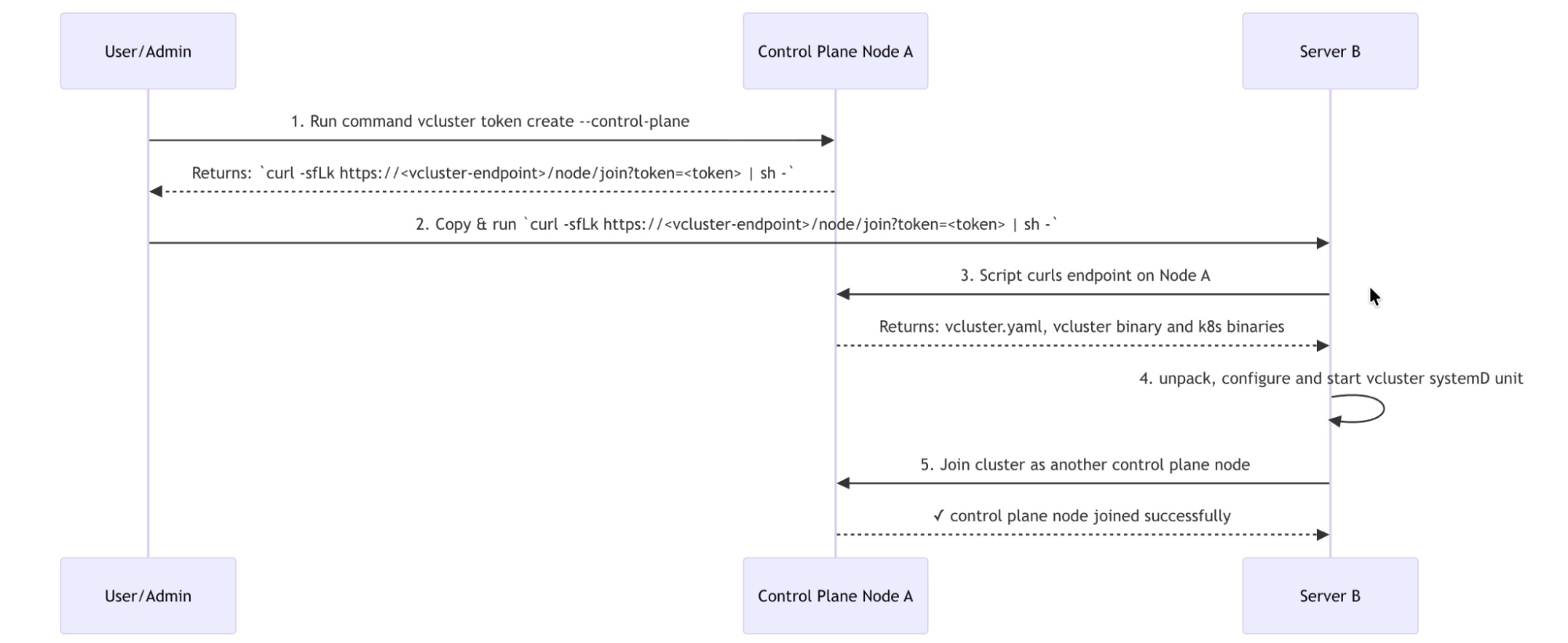
The first node creates a "control plane bundle" containing the vCluster binary, Kubernetes components, and configuration, which new nodes download, extract, and use to join the cluster seamlessly.
The Benefits of Standalone
As organizations explore adopting vCluster Standalone, the question naturally arises: how does this benefit your infrastructure strategy? There are many advantages, but five critical areas where implementing Standalone delivers the most impact are as follows:
Stack Consolidation for Operational Simplicity
vCluster Standalone unifies Kubernetes operations by delivering both the host and virtual cluster layers under one vendor. Traditional setups require separate contracts, support, and security reviews for host clusters (Rancher, K3s, cloud) and virtual cluster platforms.
This creates overhead, slows procurement, and complicates compliance. Standalone removes this friction, providing unified support from bare metal through virtual clusters, streamlined legal processes, and simplified audits. The result: faster operations and reduced vendor management.
Solves the "Cluster 1 Problem"
Historically, teams needed a Kubernetes distribution (OpenShift, Rancher/K3s, Talos, kubeadm) just to host vCluster, creating a complex bootstrapping burden. Standalone eliminates this by running directly on bare metal or VMs.
Teams no longer maintain expertise in multiple distros or manage separate host clusters, cutting complexity and accelerating adoption.
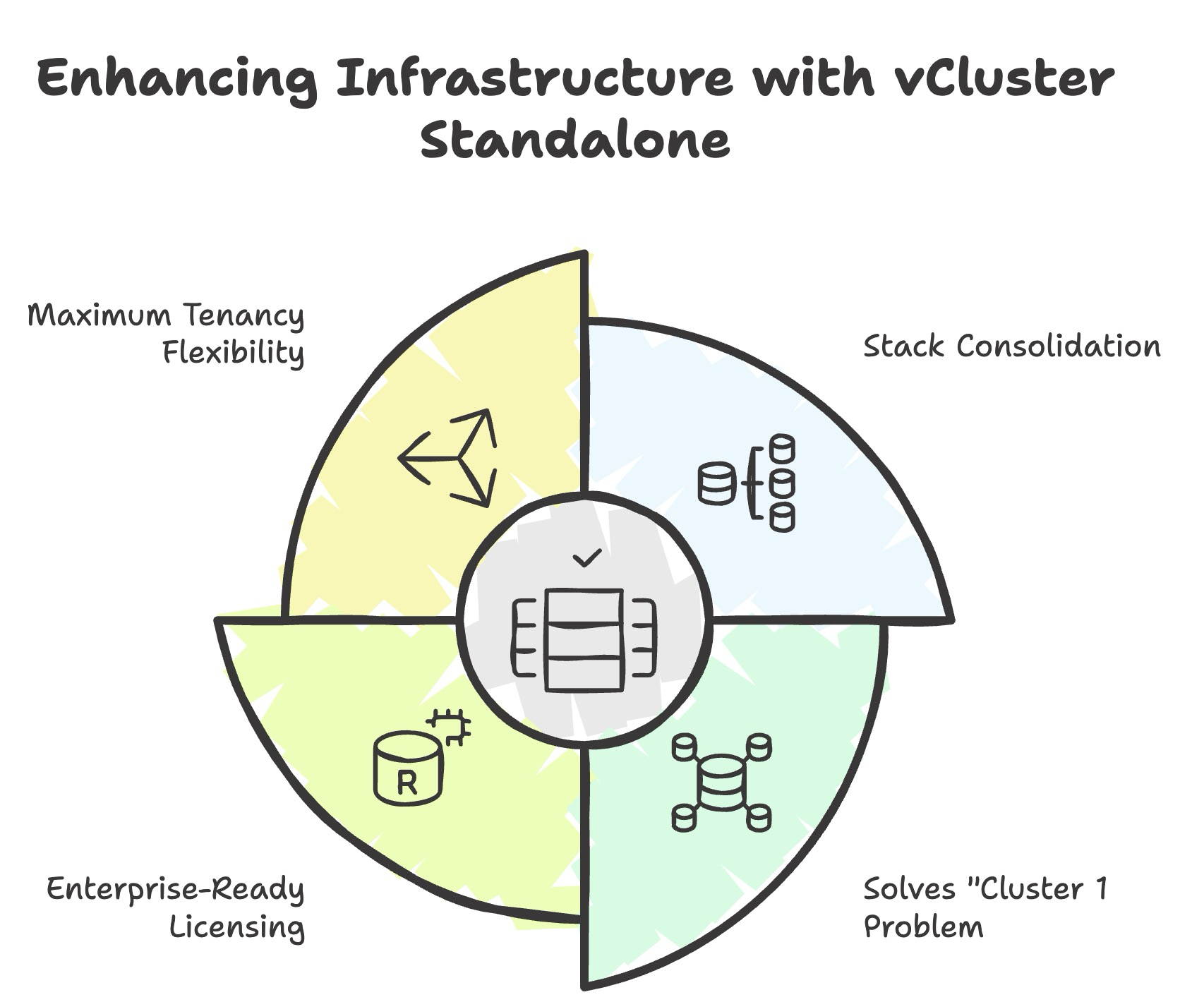
Enterprise-Ready Licensing Model
The free tier offers unlimited single-node deployments, ideal for dev, test, and CI use cases. Enterprise licensing unlocks HA control planes with HA etcd, ensuring production resilience. Bundled with your existing license, it’s a simple way to manage your host cluster.
Maximum Tenancy Flexibility
With Standalone as the host, you can create virtual clusters using any tenancy model — Shared Nodes, Private Nodes, or (soon) Auto Nodes. This means teams can tailor isolation to their needs: use Shared Nodes for lightweight dev, Private Nodes for regulated or GPU workloads, and Auto Nodes for elastic scaling. All tenancy models run consistently on top of a single Standalone control plane, simplifying management while optimizing cost, compliance, and performance.
The Land of Standalone
With standalone progressing quickly, it’s helpful to know what’s working now and what’s coming. Today, these features are up for you to try:
- Single‑node control plane (Free), HA control plane (Enterprise)
- Default CoreDNS, kube‑proxy, Flannel; alternative CNIs supported with config
- Run Platform on Standalone; create/manage virtual clusters on top (via Platform or CLI)
Future Enhancements
- Sleep mode, Snapshot PV, CIS Hardening
- Karpenter/AutoNodes + Sleep policy interactions
- SELinux package and extended OS hardening
Final Thoughts
As this blog has covered, eliminating infrastructure dependencies while maintaining operational flexibility is critical in today's Kubernetes ecosystem. vCluster Standalone transforms the traditional approach by removing the need for external host clusters entirely, bringing direct bare metal and VM bootstrapping into your vCluster.
By solving the "Cluster 1 problem," Standalone eliminates the complexity of managing multiple vendors while supporting every tenancy model, from lightweight namespaces to dedicated private nodes—all within a unified solution. Whether you're building enterprise SaaS platforms or deploying bare metal GPU clusters, infrastructure management is no longer a multi-vendor challenge but a streamlined, single-vendor experience.
Available Now:
Learn more and get started:
- Join the Community for support and best practices
- Visit the Launch site for the latest updates.


